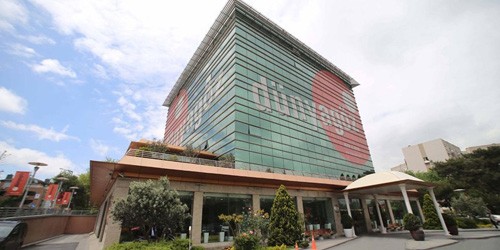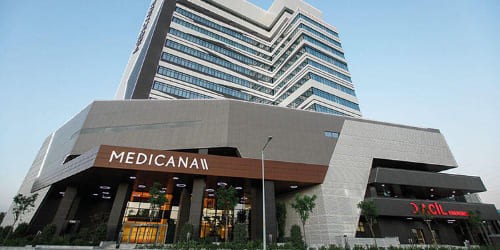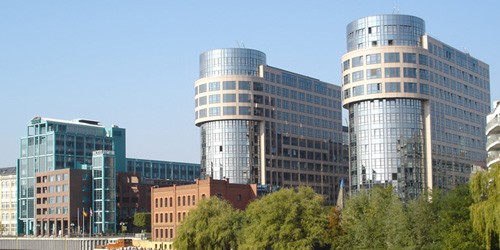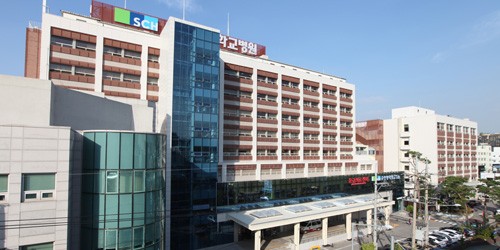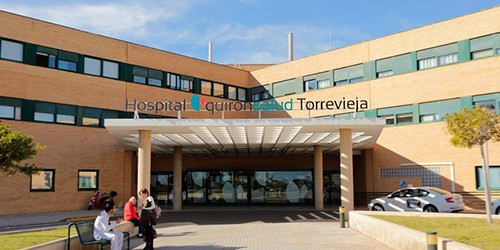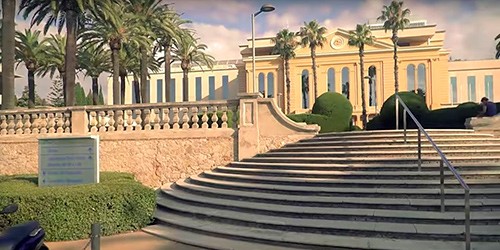1. Types of retinal tear |
2. Signs of the disease |
3. Methods of combating the disease |
4. Retinal tear treatment costs |
5. Leading clinics |
The retina is a thin layer of light-sensitive tissue lining the back of the eyeball. Tears in it are quite common. Approximately 10% of the world’s population has this pathology. A healthy, undamaged retina is essential for clear vision. When a crack forms in this tissue, it is called a tear. In most cases, the disease occurs spontaneously, but factors such as head trauma, previous ophthalmic surgery, excessive physical activity or acute myopia may provoke it. The consequences of a retinal tear can be devastating. Without treatment, patients suffer detachment and eventually irreversible blindness. What can a person do to preserve their vision in case of a retinal tear? Find out the answer in our article.
Listen to the article:
Types of retinal tears
There are different classifications of retinal tears. Depending on the location of the tear, they can be divided into macular and peripheral. In the first case, the central area of the retina (macula) responsible for the visual acuity is damaged, while in the second one, the periphery is damaged. Peripheral tears can be:
Operculated tear | Caused by a strong attachment of part of the retina to the vitreous body. As a result, a piece of the retina cannot withstand the strain and immediately tears away. |
Horseshoe tear | Occur at the back of the retina. This will lead to fluid accumulation under the sensory layer and then to retinal detachment. |
Atrophic tear | Atrophic tears are the most common type, being holes that run through the entire retina. They form due to poor blood supply and degenerative diseases. |
Depending on the severity of the pathology, there are lamellar (incomplete) tears of the macula or the periphery of the retina and through tears. The latter requires immediate intervention.
For diagnosis of a retinal tear and surgical treatment, contact the specialists at MediGlobus International Medical Platform. Our coordinators will help you to choose the right eye clinic and doctor and organise your medical trip.
Symptoms of retinal tear
A retinal tear is a disruption of the integrity of the inner lining of the eye. This condition can be asymptomatic (especially with peripheral tears) and can only be detected during an ophthalmic examination. In most cases, however, patients complain about:
flashes of light, dark spots, cobwebs;
impaired clarity of vision;
shadows in the peripheral vision;
a grey shroud over part of the field of vision;
headache.
Without pupil dilation and special ophthalmic equipment, it is impossible to see a retinal tear from outside the eye. The pathology can be diagnosed only by careful examination with special lenses and ultrasound scans.
What methods are used to treat a retinal tear?
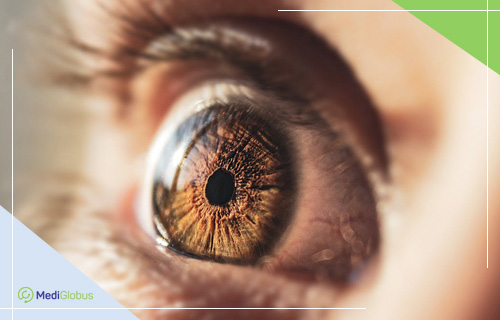
Depending on the size and location of the retinal tear, the pathology can be at low or high risk of progression to detachment. Sometimes the eye will spontaneously begin to form a stabilising scar around the fissure. However, this happens only in 5-10% of cases.
If the risk of a retinal detachment is low, patients do not need immediate treatment. However, once the defect has been detected, it must be monitored by a qualified specialist. This is to ensure that the condition does not worsen. If not, timely action needs to be taken.
When a retinal tear is detected, it is most often surgically repaired using laser or cryopexy. More than 90% of such defects are located in the periphery and not in the centre of the eye, so laser treatment has no negative effect on vision. Patients may experience slight discomfort during the procedure and see flashes of light.
Laser treatment of a retinal tear involves sealing the edges of the fissure to prevent further leaking of intraocular fluid under the retina. The operation takes 10-20 minutes and is done under local anaesthetic. After the surgery, the patient needs to use eye drops for 2-3 weeks for a quick recovery. No hospitalisation is necessary. A scar is formed at the site of the tear, which stabilises the retina. In severe cases, the procedure may need to be repeated.
The treatment of a retinal tear by freezing is called cryopexy. This is a minimally invasive surgical procedure that involves the use of a special cryoprobe. During the procedure, the retina is cauterised against the vitreous body at an extremely cold temperature. This creates a scar that “glues” the fissure together. Cryopexy takes about 20 minutes. After the intervention, the patient can leave the clinic the same day.
A penetrating or incomplete retinal macular tear, as well as severe large peripheral fissures, are predominantly treated with vitrectomy. This is an operation to remove part or all of the vitreous and then replace it with silicone or gas.
After removing the intraocular fluid, the surgeon restores the integrity of the retina with a laser. The intervention takes place under local or general anaesthesia. It lasts from one to three hours. The patient leaves the clinic after 1-2 hours.
To minimise the risk of complications and provide a quick rehabilitation, several types of eye drops are prescribed for 2-4 weeks, as well as a special postoperative regimen. After the surgery, vision is restored in 1-2 months.

The prognosis for the treatment of a retinal tear
Surgical correction of a retinal tear using a laser or cryopexy is successful in 95% of cases. A single procedure is sufficient for most patients to achieve the best therapeutic effect. Timely treatment of the pathology allows you to maintain normal vision and prevent blindness.
The cost of surgery for a retinal tear abroad
The cost of treatment is determined by several factors. These include the severity of the disease, the type of surgery, the level of the clinic and the qualifications of the doctor. The approximate cost of surgery for a macular or peripheral retinal tear abroad is:
Turkey
| Procedure | Cost |
|---|---|
| Consultation with an ophthalmologist | from $150 |
| Laser coagulation | from $900 |
| Vitrectomy | from $1,200 |
South Korea
| Procedure | Cost |
|---|---|
| Consultation with an ophthalmologist | from $90 |
| Laser coagulation | from $2,000 |
| Vitrectomy | from $2,500 |
Spain
| Procedure | Cost |
|---|---|
| Consultation with an ophthalmologist | from €450 |
| Laser coagulation | from €2,300 |
| Vitrectomy | from €2,600 |
Germany
| Procedure | Cost |
|---|---|
| Consultation with an ophthalmologist | from €500 |
| Laser coagulation | from €2,500 |
| Vitrectomy | from €2,900 |
Where can I get retinal tear treatment abroad?
Ophthalmology is one of the promising areas of focus of many clinics abroad. Turkey, Germany, Spain and South Korea pay special attention to this field of medicine. Turkish ophthalmological centres and departments are considered the most popular among foreign patients. These include Batıgöz and Dunyagöz clinics, as well as the Medicana Ataşehir Ophthalmology Centre and Veni Vedi Hospital.
In Germany, foreign patients with a macular or peripheral retinal tear are treated by specialists at the Spreebogen Eye Clinic.
The renowned eye surgeon Prof. Manfred Tetz practices there. He has performed over 100,000 surgical interventions to his credit. The doctor has been practising for over 30 years.
The Spreebogen Clinic is ranked by Focus magazine as one of the best medical centres in the country every year. It is equipped with modern diagnostic and therapeutic equipment. There are several types of laser units here: fractional, argon, diode and solid-state lasers.
In South Korea, surgery for macular and peripheral retinal tears is performed in the ophthalmology departments of SoonChunHyang University Hospital and the Hangil Eye Clinic. These medical institutions have one of the highest success rates in the treatment of retinal pathologies. More than 92% of patients are satisfied with the quality of care.
In Spain, surgical treatment for retinal tears is carried out at the Quiron Torrevieja and Teknon hospitals. There are large ophthalmology departments and centres that see thousands of patients each year. The Teknon Eye Clinic is headed by Professor Fernando Castanera de Molina. He is one of the country’s leading specialists in laser treatment for retinal diseases. The doctor has over 30 years of experience.
Resume
A retinal tear is a serious problem that threatens vision integrity. In 90% of cases, it requires urgent examination and treatment. The pathology can cause symptoms such as seeing black spots, moving cobwebs, “flickers” and flashes of light. Without timely correction of the condition, a retinal tear often leads to retinal detachment and permanent blindness.
The standard treatment is laser photocoagulation or cryopexy. Vitrectomy is also performed on patients with a severe retinal tear.
The price of laser surgery for macular and peripheral retinal tears abroad starts at $900 and vitrectomy at $1,200.
The most sought-after medical institutions for the treatment of retinal tears abroad are considered to be: Batıgöz Clinic, Spreebogen Eye Centre, Teknon Hospital, Dunyagöz Eye Centre, SoonChunHyang Hospital, Hangil Eye Centre, Quirónsalud Torrevieja Hospital and Veni Vedi Hospital.
To make an appointment for retinal tear surgery abroad, click on the button below and leave your contact details. We will call you back as soon as possible.
Sources:





